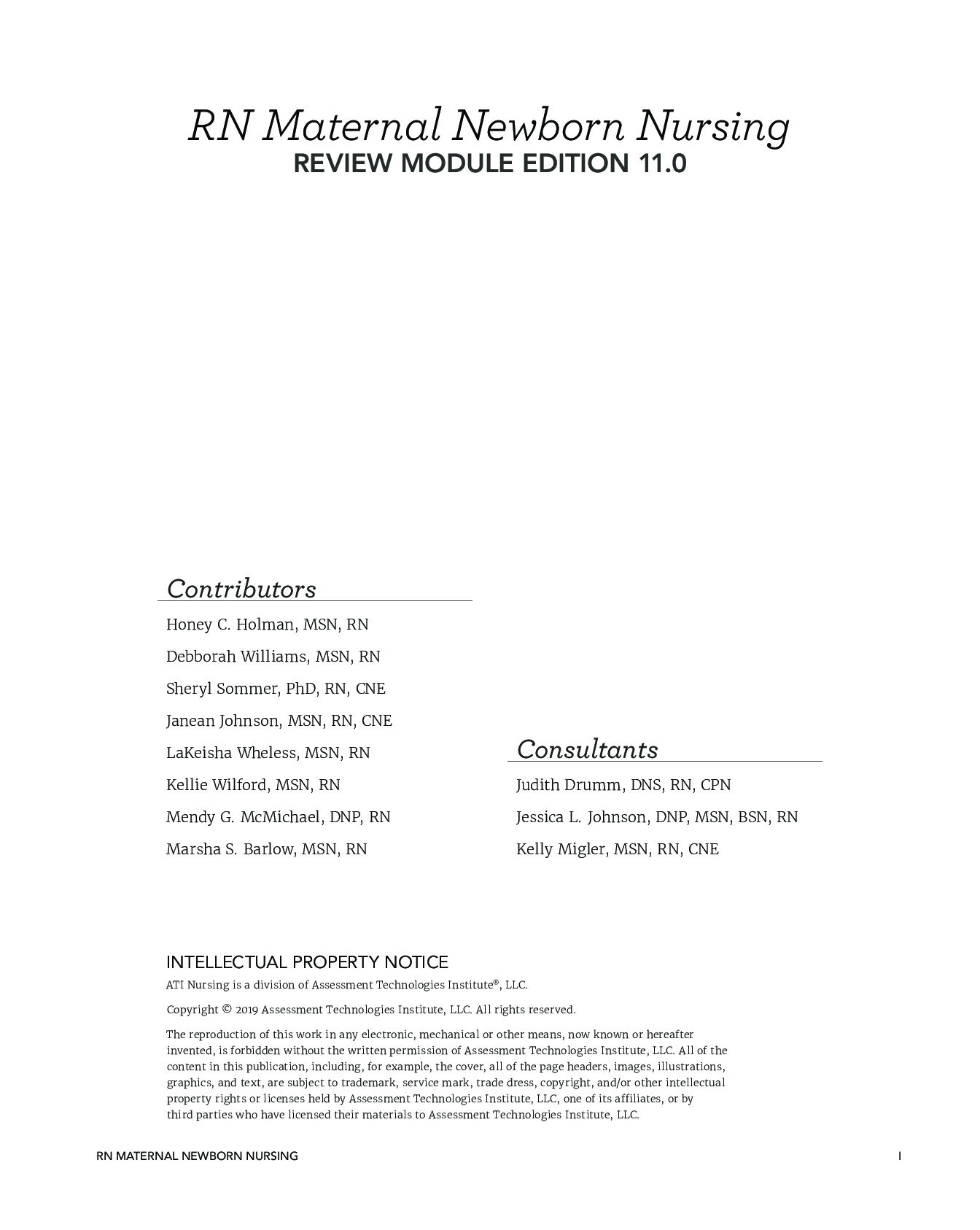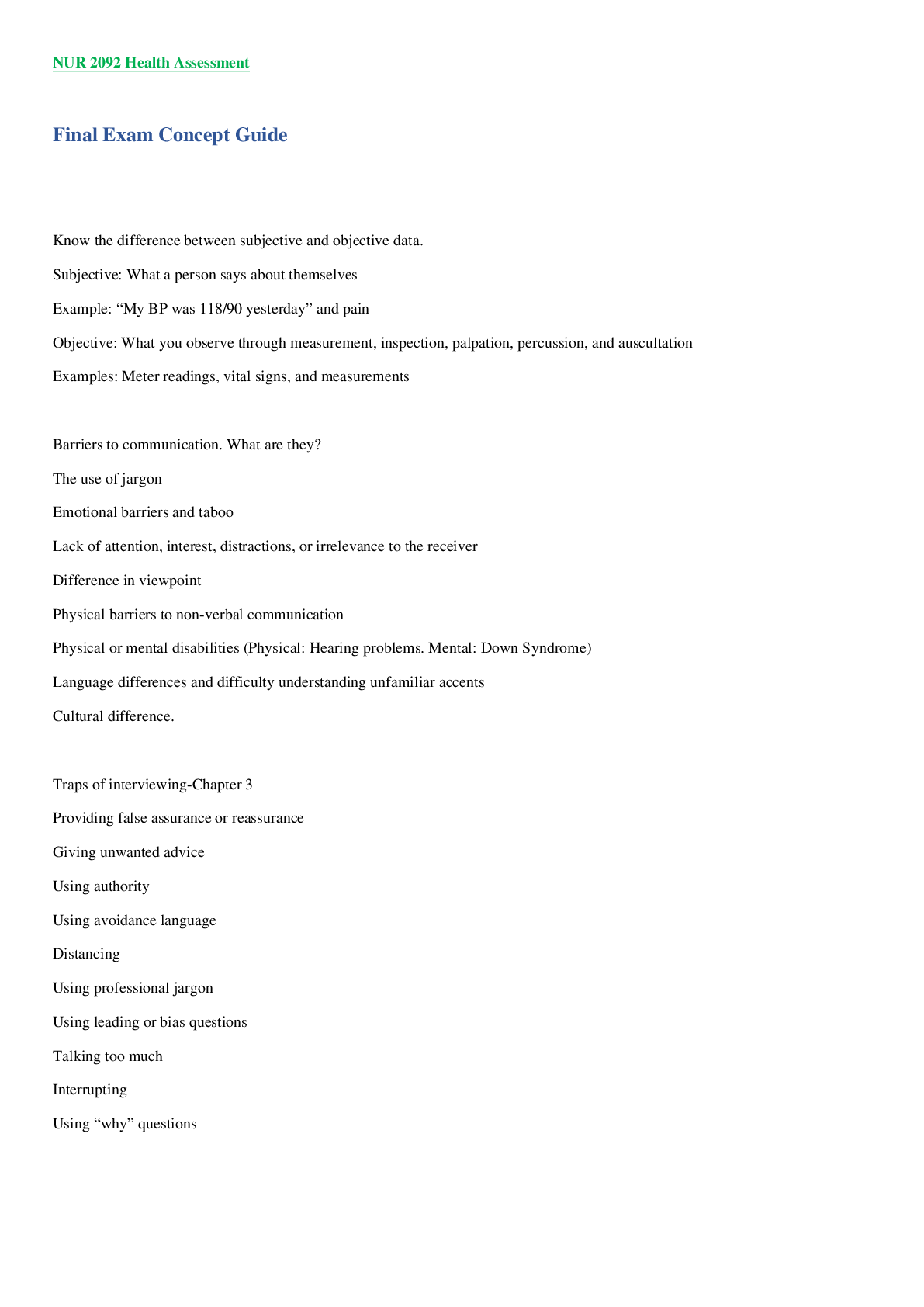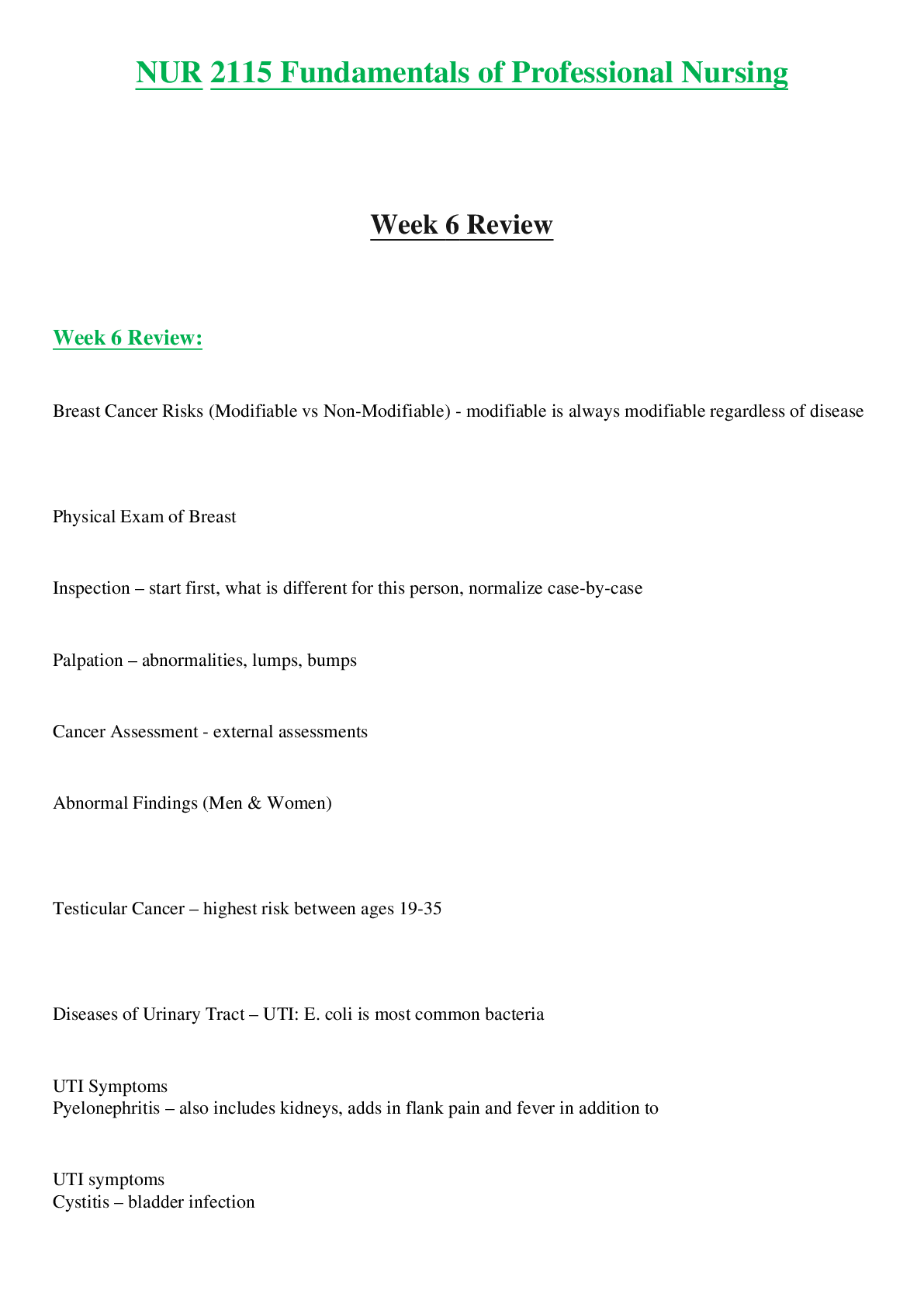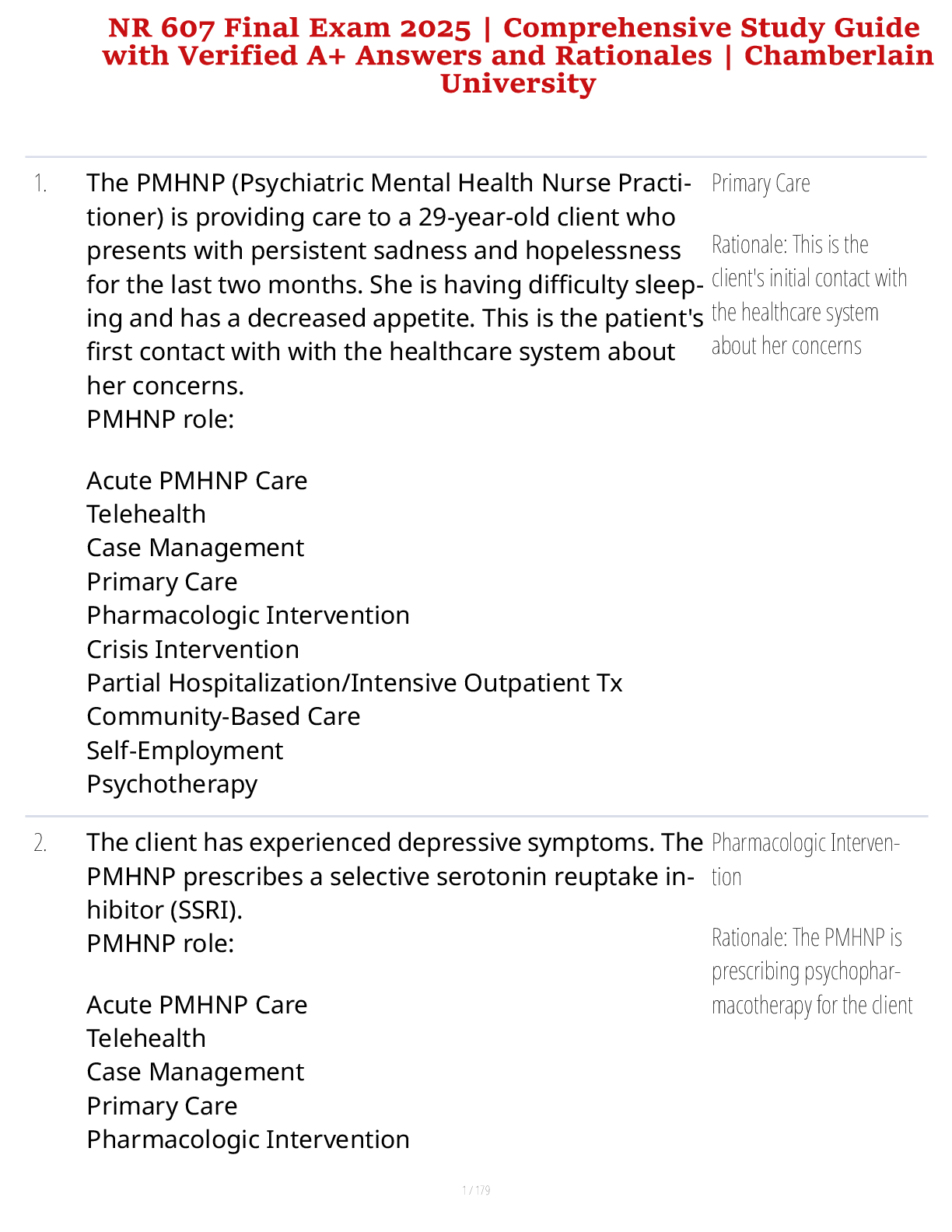*NURSING > STUDY GUIDE > N5315 / N5315 Advanced Pathophysiology Module 6 Study Guide (Latest Update) - University of Texas at (All)
N5315 / N5315 Advanced Pathophysiology Module 6 Study Guide (Latest Update) - University of Texas at Arlington
Document Content and Description Below
N5315 Advanced Pathophysiology Module 6 Study Guide Pulmonary and Shock Core Concepts and Objectives with Advanced Organizers Age related Difference in pulmonary anatomy and physiology 1. Descri ... be the age-related changes which occur in the alveoli, chest wall, and gas exchange. o Neonate: Surfactant produced by 20-24 wks gestation; secreted into fetal airways by 30 wks gestation • Surfactant deficiency seen in premature infants respiratory distress syndrome (hyaline membrane disease) Immature respiratory control ↓ response to hypoxia/hypercapnia ↑ risk for apnea/hypoxia o Infant: ↑ chest wall compliance (esp. premature infants) ↑ metabolic rate ↑ O2 consumption o Children: Alveoli ↑ until 5-8 yrs old o Older Adults: ↓ elastic recoil Chest wall stiffening Changes in gas exchange ↑ flow resistance ↓ alveolar wall tissue ↓ alveolar surface available for gas diffusion ↓ gas diffusion Joint stiffening/rib ossification ↓ compliance ↓ respiratory endurance (20%) by 70 yrs old ↓ vital capacity ↑ residual volume ↓ V/Q ratio ↓ compensatory response to hypercapnia/hypoxemia ↓ PaO2 2. Explain the structure and physiologic differences of the pulmonary system in the infant and child. o Infant: Smaller airway than adults ↑ obstructive episodes from mucosal edema or secretion accumulation ↑ tonsil size swelling obstruction Nose breathers until 2-3 mos old congestion obstruction Immature respiratory control ↓ response to hypoxia/hypercapnia ↑ risk for apnea/hypoxia o Children: Smaller airway than adults ↑ obstructive episodes from mucosal edema or secretion accumulation Diaphragmatic breathing at rest pulmonary compromise intercostal retractions or retractions of supraclavicular spaces ↓ glycogen reserve ↓ effectiveness of accessory muscles fatigue & lactic acidosis may occur quickly 3. Examine the process of ventilation, gas exchange and transport. o Ventilation: Movement of air in & out of lungs Controlled by respiratory center in brain stem • Dorsal Respiratory Group (DRG): o located in medulla o control breathing pattern • Central chemoreceptors: o Located near respiratory center o Monitor arterial blood maintain pH, PaCO2, & PaO2 ↑ H+ concentration trigger receptors stimulate respiratory center ↑ ventilation ↑ CO2 exhaled ↓ H+ concentration • Peripheral chemoreceptors: o Located in aorta & carotid arteries o Monitor pH & PaO2 ↓ PaO2 triggers receptors stimulate respiratory center ↑ ventilation • These receptors do not kick in until PaO2 <60 mmHg Alveolar ventilation measured by PaCO2 Mechanics of breathing: • Inspiration: o Diaphragm is major muscle of inspiration & is innervated by phrenic nerve Contraction flattens out ↑ negative pressure in lungs draws air in Diaphragm contraction external intercostal muscles contract ↑ A/P diameter ↑ air drawn into lungs o Accessory muscles: sternocleidomastoid & scalene muscles ↑ A/P diameter Assist w/ ventilation when minute volume ↑ (e.g. respiratory distress or strenuous exercise [Show More]
Last updated: 3 years ago
Preview 1 out of 20 pages

Buy this document to get the full access instantly
Instant Download Access after purchase
Buy NowInstant download
We Accept:

Reviews( 0 )
$7.00
Can't find what you want? Try our AI powered Search
Document information
Connected school, study & course
About the document
Uploaded On
Apr 02, 2021
Number of pages
20
Written in
All
Additional information
This document has been written for:
Uploaded
Apr 02, 2021
Downloads
0
Views
81















